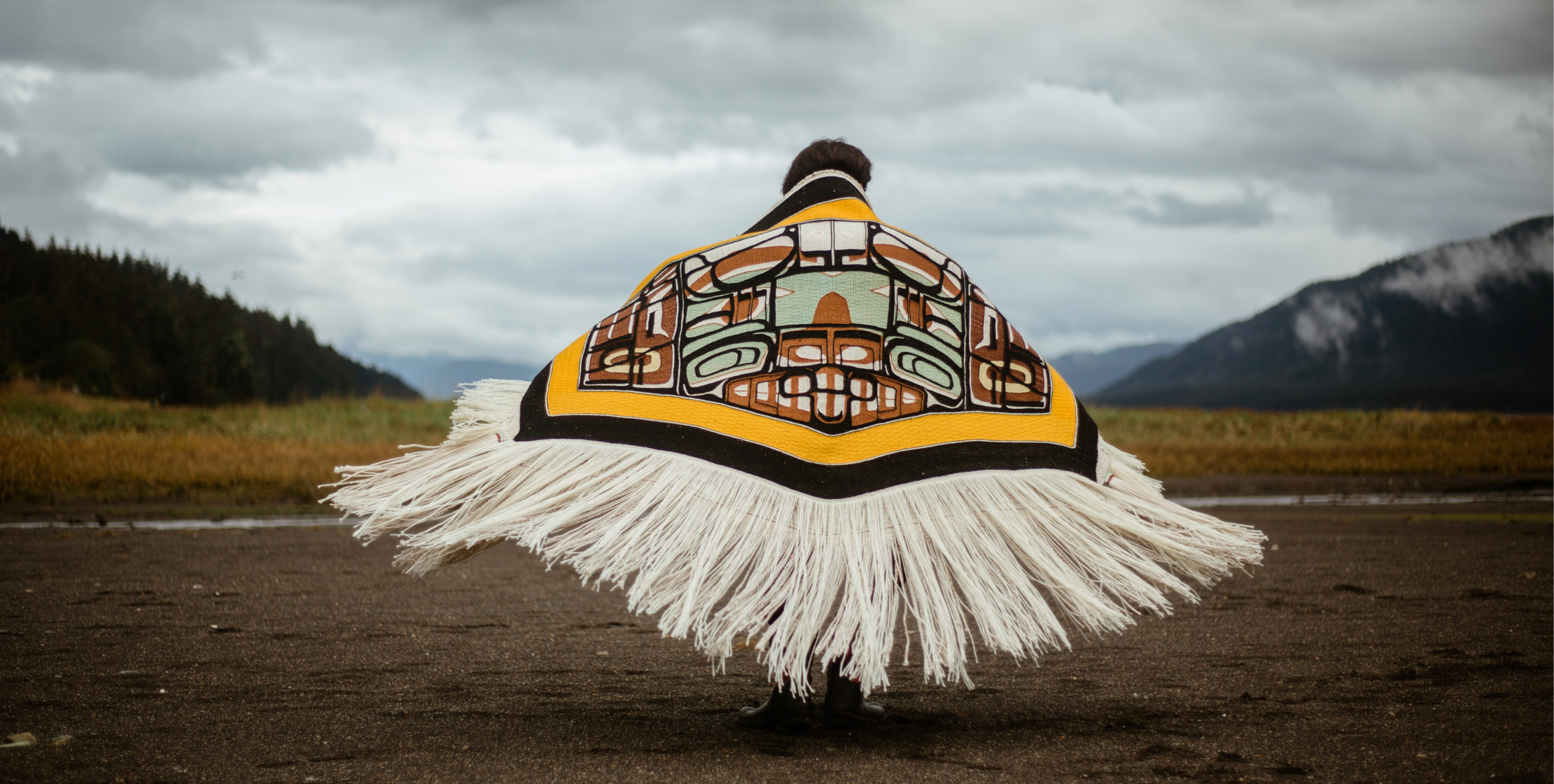Rug and Textile Appreciation Morning: Past, Present and Future of Chilkat Weaving

Originating in the Pacific Northwest, Chilkat weaving uses a complex finger-twined technique requiring immense skill, time and dedication. These boldly patterned robes, also called “dancing blankets,” are worn for ceremonial occasions by dignitaries and high-ranking tribal members of the Haida, Tsimshian, Tlingit and other Northwest Coast Indigenous peoples of Alaska and western Canada. A single Chilkat robe can take years to weave, and the knowledge of how to complete them has always been held by only a small number of weavers.
Join us online for a conversation with Chilkat weaver Lily Hope and researcher Zachary Jones about the past, present and future of this complex weaving tradition.
About Lily Hope
Lily Hope is Tlingit Indian and a Chilkat weaver, one of the few designers of dancing blankets working today. Her contemporary works in textiles and paper collage blend Ravenstail and Chilkat design. She teaches both finger-twined styles in the Pacific Northwest, and lectures internationally. Hope is president and co-founder of Spirit Uprising, a nonprofit dedicated to maintaining, recording and teaching weaving with integrity.
About Zachary Jones
Zachary R. Jones, Ph.D., is a historian and curator based in Alaska. His research focuses on Northwest Coast art history, including on historic artists from the Tlingit community. Dr. Jones has published widely in history, anthropology, art history and museum journals. He currently works for the National Park Service’s Museum Program in Anchorage, Alaska.
How to Participate
You can register for this program online. After you register, we will email you a link and instructions for joining online via Zoom. Simply follow that link at the time the event starts (1 p.m. EST / 10 a.m. PST). When you register, you can also request to receive a reminder email one day before the program with the link included.
About Rug and Textile Appreciation Mornings
Collectors and experts discuss textile topics and display examples from their personal holdings. This series is named in honor of late Textile Museum trustee emeritus, Harold M. Keshishian. Browse upcoming programs

